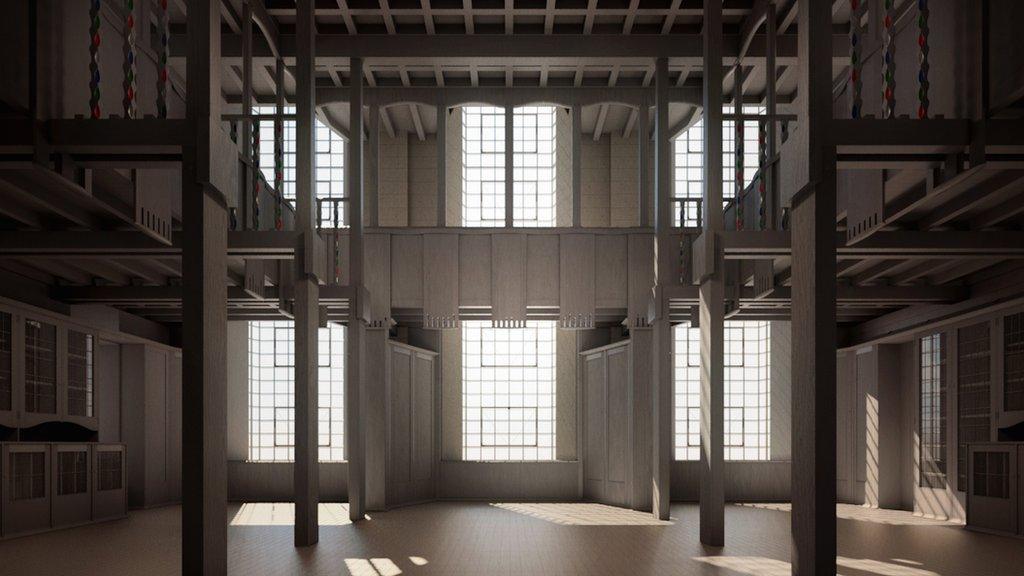How do you recreate a masterpiece like the Mackintosh Library?
- Published
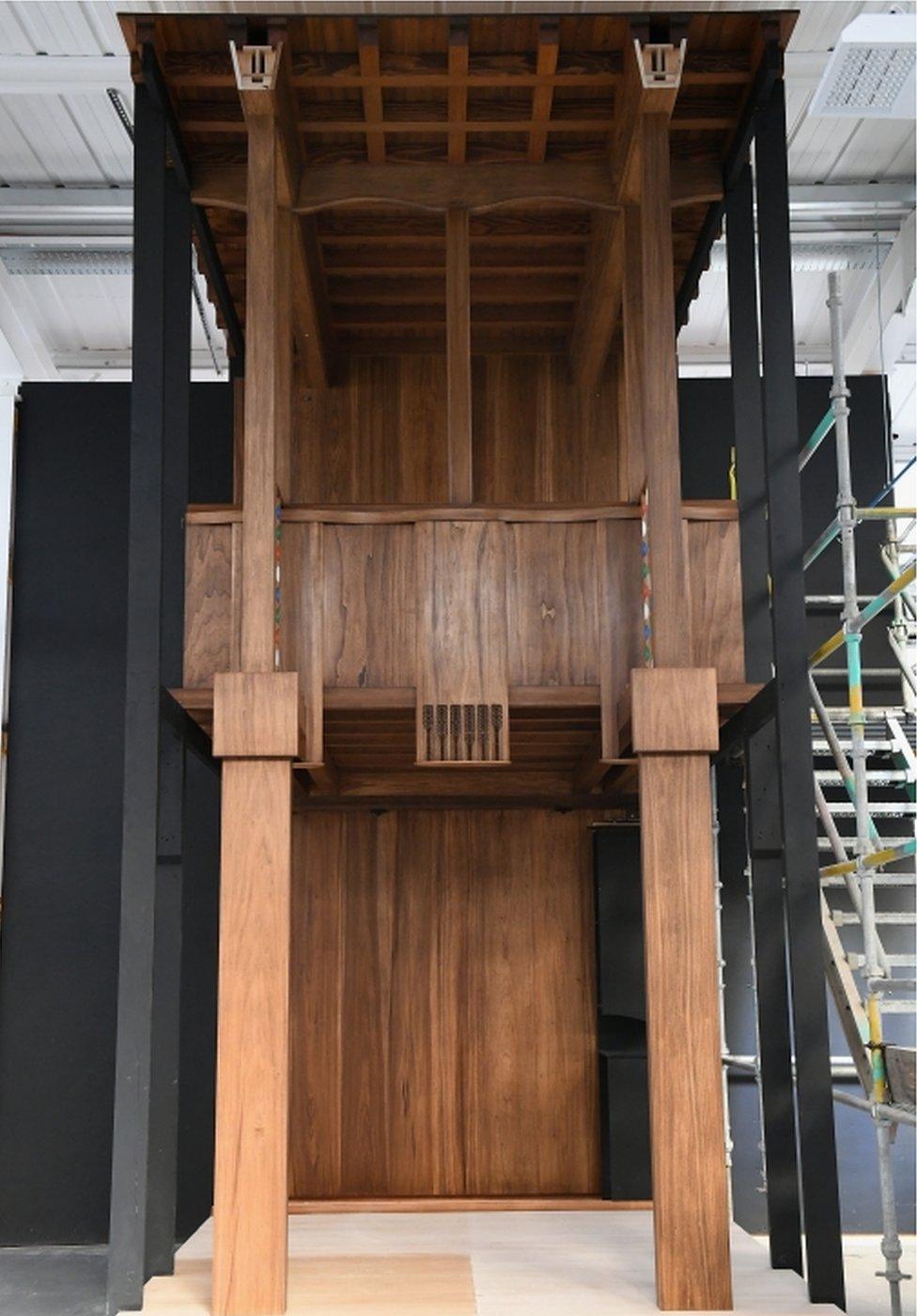
The Glasgow School of Art full size prototype of a section of the Mackintosh Library returning it to the original 1910 design
The Mackintosh library at Glasgow School of Art, one of the world's finest examples of art nouveau design, was almost entirely destroyed by fire in May 2014 but efforts began almost immediately to bring it back to life.
The Category A-listed Glasgow School of Art (GSA), considered to be Charles Rennie Mackintosh's masterpiece building, was devastated when a fire engulfed its west wing three years ago.
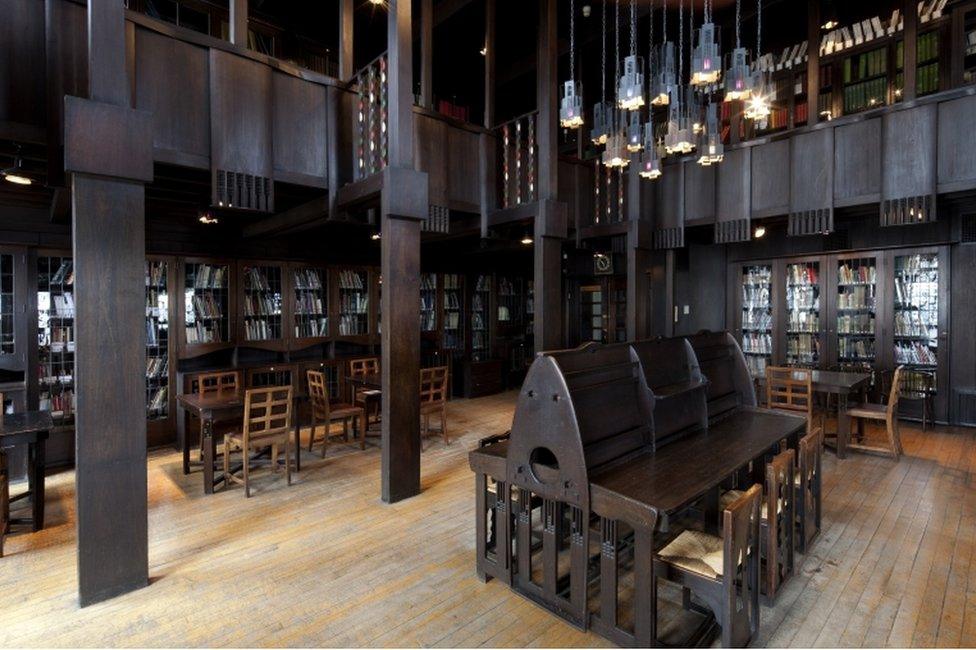
The original Mackintosh library (pictured before the fire) was much darker than the new prototype
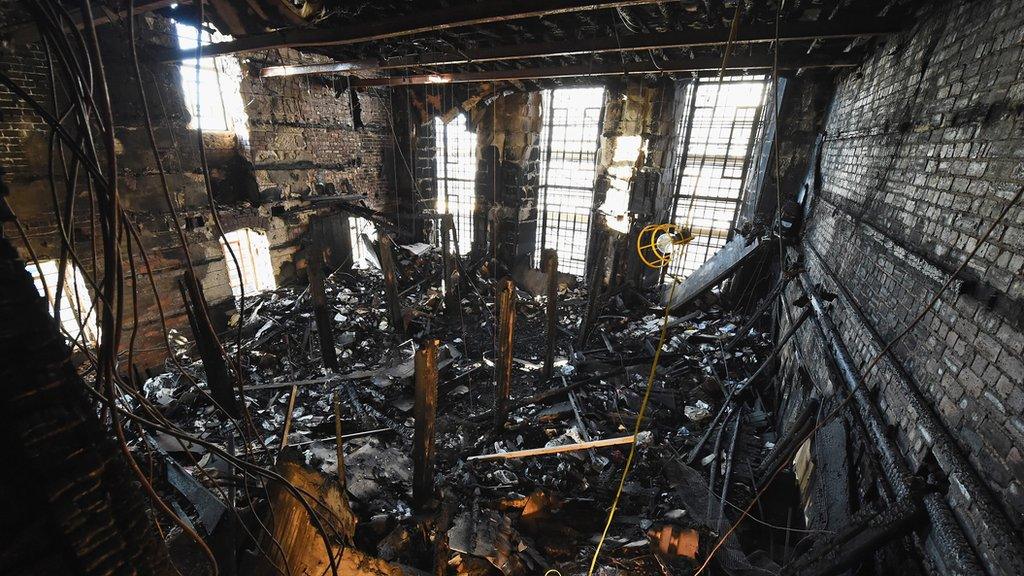
The library in the Mackintosh building was gutted in the blaze on 23 May 2014
The library, which housed original furniture and fittings designed by Mackintosh as well as valuable archives, was reduced to blackened rubble.
But those running the famous art school pledged the library would be recreated exactly as the genius architect and designer had handed it over in 1910.
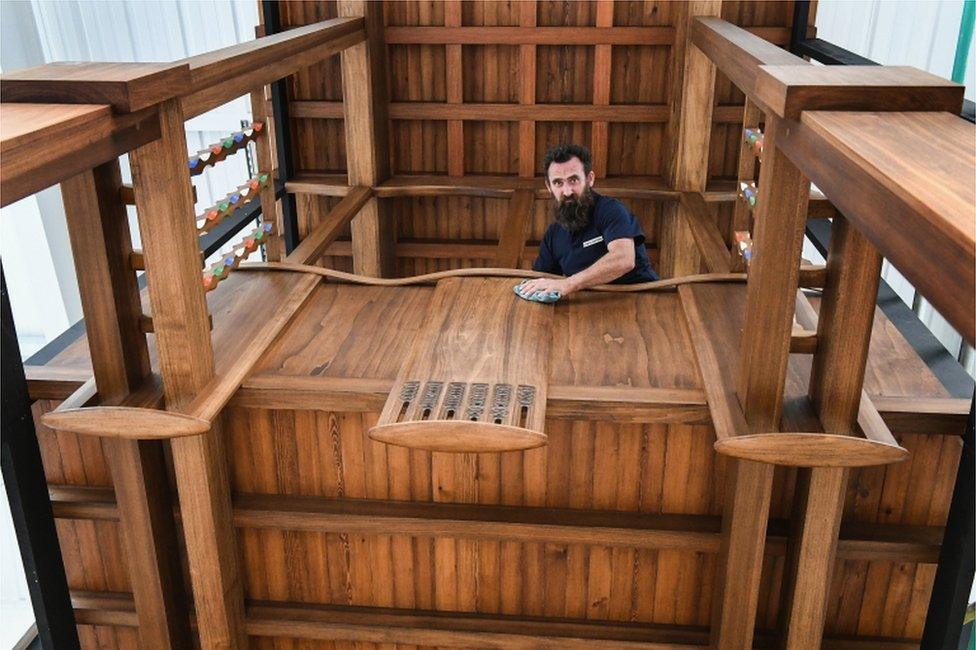
Angus Johnston, a master craftsman from Laurence McIntosh, cleans full-size prototype
Professor Tom Inns, director of The GSA, said: "From the outset we said that we would restore the building and restore it well."
In order to do that they have gone to great lengths to recreate every detail of the original library.
They have now produced a full-size prototype of a section of the library.

Every detail of the original design has been recreated
It is just one section and is about one-twelfth of the actual size of the library but its makers says it is correct in every detail.
Natalia Burakowska, of Page Park architects, is an expert in the restoration of cultural heritage.
She has carried two years of painstaking research to prepare the ground for the prototype.

The prototype uses American Tulip wood, the same as the original
"We spent endless amounts of hours in the building measuring the burnt bits," she says.
"This has been really important to us because even if you have amazing technology in place it is still the personal contact with the remains of the library that has been an amazing, valuable and important experience for us."

Natalia Burakowska has spent two years painstakingly recreating the design
Ms Burakowska also studied the original Mackintosh plans and the enormous GSA archive, as well as photos from students and graduates.
She says the details are faithful to Mackintosh's original library right down to using the same nails as him.
They were originally made in Glasgow but that firm closed down and sold the machinery to the United States.

Craftsmen have been employed to recreate the intricate details of the original design
So the nails have been brought from the US.
"A lot of people ask us why would you not just screw all of the timbers together?" Ms Burakowska says.
"What is important is for this room to age in exactly the same manner as it would age from 1910 onwards. That is really important."

Prof Tom Inns says it is a moving reminder of the original library
Specialist woodworkers Laurence McIntosh were responsible for building the prototype.
Managing director David Macdonald said using the same nails as the original added to the "authenticity" of the recreation.
He said: "Every section has been detailed to show precisely the angle of the nails, how far the nail head is punched in, how it is filled, the exact length of the nail, so it is really important how the structure is held together.
"There is no glue. There are very few screws used in the construction. It is all nails that are holding it together and traditional hand-made dowels. It's all completely authentic."
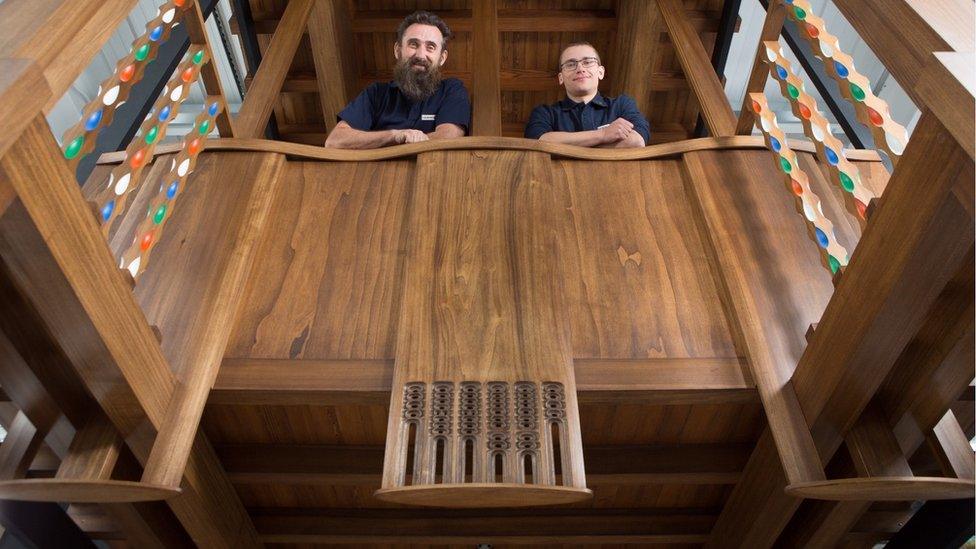
Master craftsmen Angus Johnson and Martins Cirulis in a full-size model of a section of the fire-gutted Mackintosh Library
Mr Macdonald said it was very unusual to make a full size prototype but it had helped identify the pitfalls before the library is recreated for real on-site at the famous Glasgow School of Art building next year.
He said: "The critical brief was to reconstruct the library as it was handed over in 1910.
"So everything has to match precisely what was done by the Mackintosh tradesmen, in every aspect from the timber used, the fixings, the nails, the finish, the carvings and the paint effects on the spindles. It has all had to be precisely replicated."
Although the library prototype has been created with great care and accuracy, comparison between it and pictures of the Mackintosh before it burnt down reveal they are completely different colours.
Ms Burakowska says this is because the wood in the library aged and became darker as it was used over 100 years.
"It is much lighter than everyone remembers but this is how Mackintosh would see it in 1910," she says.
"It is a reconstruction of the original Mackintosh library so it feels new and there is no way we can change that."
There was some debate about the kind of wood that was used by Mackintosh in the library.
Ms Burakowska says: "Our first thought was that it would probably be built using Kauri Pine then we found some documents in our archives saying the library could be built in Cypress.
"But then scientific analysis of the timber proved that it is actually Tulip wood.
"It is one of the softest hard woods and had been imported from the United States."
She says she hopes it gains a new layer of patina through use, making it darker in the same way as the old library.
The Board Room of the GSA was also built in American Tulip Wood and it has provided a "great example of the kind of finish used in the library".
Prof Tom Inns says the creation of the prototype is an "incredibly important day for Glasgow School of Art".
He said it was a "moving" reminder of what the library was like before the devastating fire.
The GSA hope to begin installing the library on-site next spring.
As for the prototype - they hope it can go on public display - to show the craft and effort required to bring a masterwork back to life.
- Published25 May 2014

- Published3 February 2017
